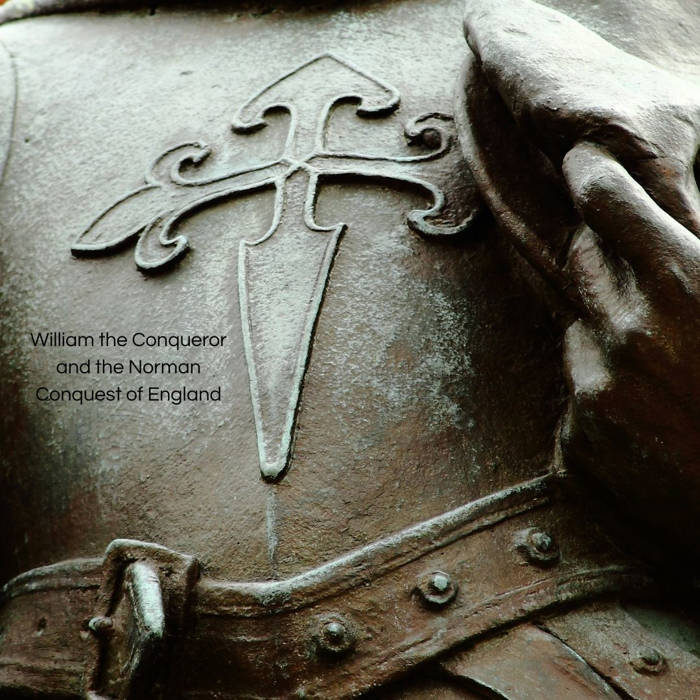
Few events in medieval history have had as profound an impact as the Norman Conquest of England in 1066. Led by William the Conqueror, Duke of Normandy, this invasion reshaped England's political, cultural, and social landscape. The conquest introduced feudalism, transformed the English language, and altered the country's ruling elite. But how did William, a foreign duke, claim the English throne? And what lasting effects did his rule have on England? Let's explore this fascinating chapter in history. ⚔️
Who Was William the Conqueror?
Born in 1028 in Falaise, Normandy, William was the illegitimate son of Duke Robert I of Normandy and a woman named Herleva. Despite his illegitimacy, William inherited his father’s title at just eight years old. His early years were marked by constant battles for survival, as rival nobles challenged his claim to power.
By the time he reached adulthood, William had proven himself as a strong and ruthless leader, consolidating his rule over Normandy. He was also a vassal to the King of France, but his ambitions extended far beyond his duchy—toward the English throne.
The Road to the Throne: Why Did William Invade England?
The events leading to the Norman invasion started with the death of King Edward the Confessor in January 1066. Edward left no direct heir, and three main claimants emerged:
- Harold Godwinson: The most powerful noble in England, crowned king immediately after Edward’s death.
- William of Normandy: Claimed that Edward had promised him the throne and that Harold had sworn loyalty to him.
- Harald Hardrada of Norway: Believed he had a claim through an old Viking agreement.
William was enraged when Harold was crowned king. Determined to take the throne by force, he secured the Pope’s support and gathered an army of around 7,000 soldiers, knights, and mercenaries. After months of preparation, he set sail for England.
The Battle of Hastings: A Turning Point in English History
On October 14, 1066, the Battle of Hastings decided England’s fate. William’s army of Normans, Bretons, and Flemish soldiers faced Harold’s Anglo-Saxon forces.
- The battle lasted all day, with fierce fighting on both sides.
- The Normans used cavalry and archers, while the Anglo-Saxons relied on their famous shield wall.
- A turning point came when Harold was struck in the eye by an arrow and killed. His army crumbled soon after.
By the end of the battle, William had won. On December 25, 1066, he was crowned King of England in Westminster Abbey.
The Norman Rule: Changes and Impact
Once king, William faced several uprisings but crushed them with brutal efficiency. To secure his rule, he implemented major changes:
1. Feudalism: A New Social System 🏰
William introduced the feudal system, where:
- The king owned all land and granted it to loyal barons in exchange for military service.
- These barons controlled knights and peasants, creating a strict social hierarchy.
2. Castles: Symbols of Norman Power 🏯
To maintain control, William built hundreds of castles, including the famous Tower of London. These fortresses acted as military bases and administrative centers.
3. The Domesday Book: England’s First Census 📜
In 1086, William ordered the creation of the Domesday Book, a detailed survey of England’s land, wealth, and population. It helped him:
- Assess taxes efficiently.
- Strengthen control over his new kingdom.
4. Language and Culture: The Birth of Middle English 📖
Norman rule introduced thousands of French words into the English language, especially in law, government, and food (e.g., "court," "jury," "beef"). This blend of Old English and Norman French eventually led to Middle English, shaping the language we speak today.
5. Church Reforms: Aligning with Rome ⛪
William restructured the English Church, replacing Anglo-Saxon bishops with Norman clergy and strengthening ties with the Pope. He also introduced Romanesque architecture, seen in Canterbury Cathedral and other churches.
The Legacy of William the Conqueror
William ruled England until his death in 1087. His legacy includes:
- Establishing a centralized monarchy.
- Laying the foundation for modern England’s legal system.
- Transforming England’s nobility and language.
Even today, his impact is visible in English law, governance, and architecture. Without William’s conquest, England’s history would have taken a completely different course.
⚔️👑⚔️👑⚔️👑
The Norman Conquest of 1066 was a pivotal moment in English history. William the Conqueror not only seized the throne but also reshaped the nation in ways that still resonate today. His victory at Hastings marked the end of the Anglo-Saxon era and the beginning of a new, French-influenced England.
From castles to language to governance, William’s influence remains undeniable. He truly earned his title—William the Conqueror. ⚔️👑

